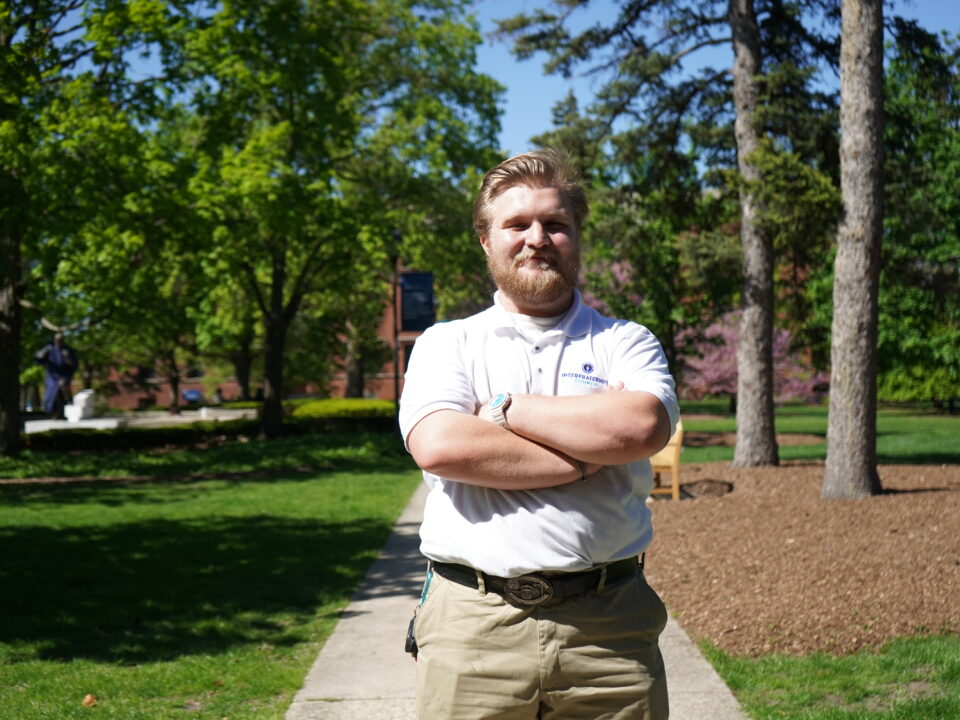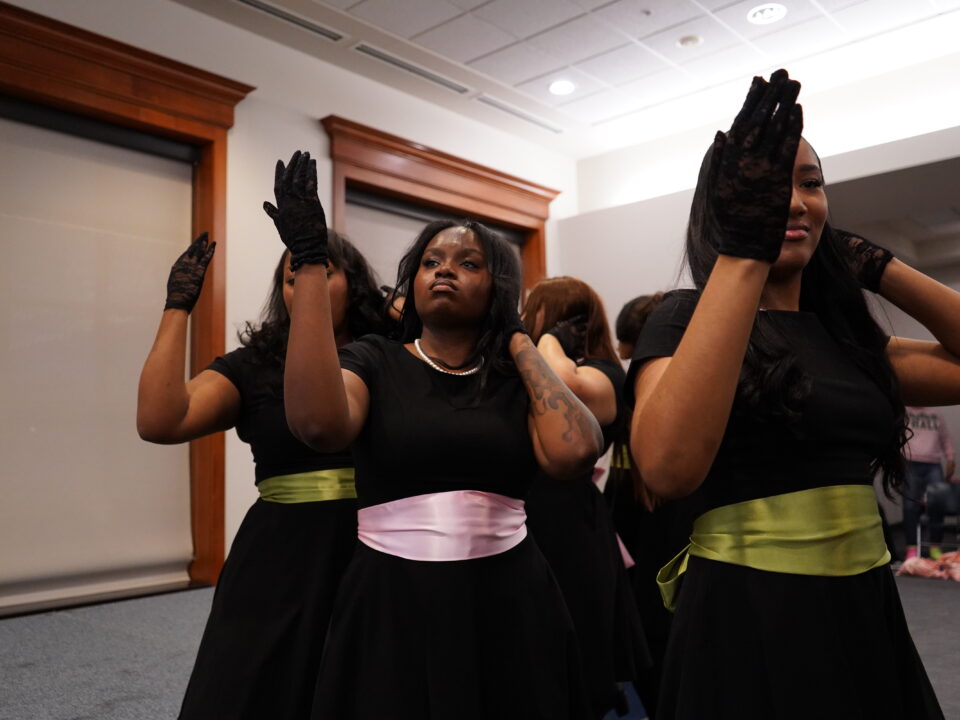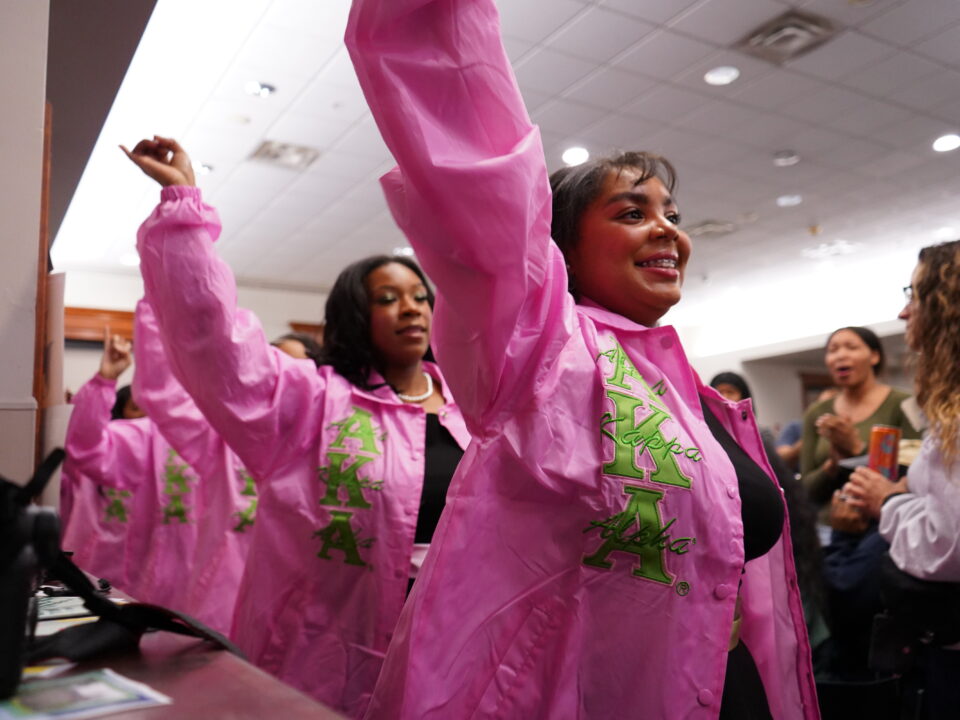‘We killed it’ — reflections on the first-ever virtual Jazz festival
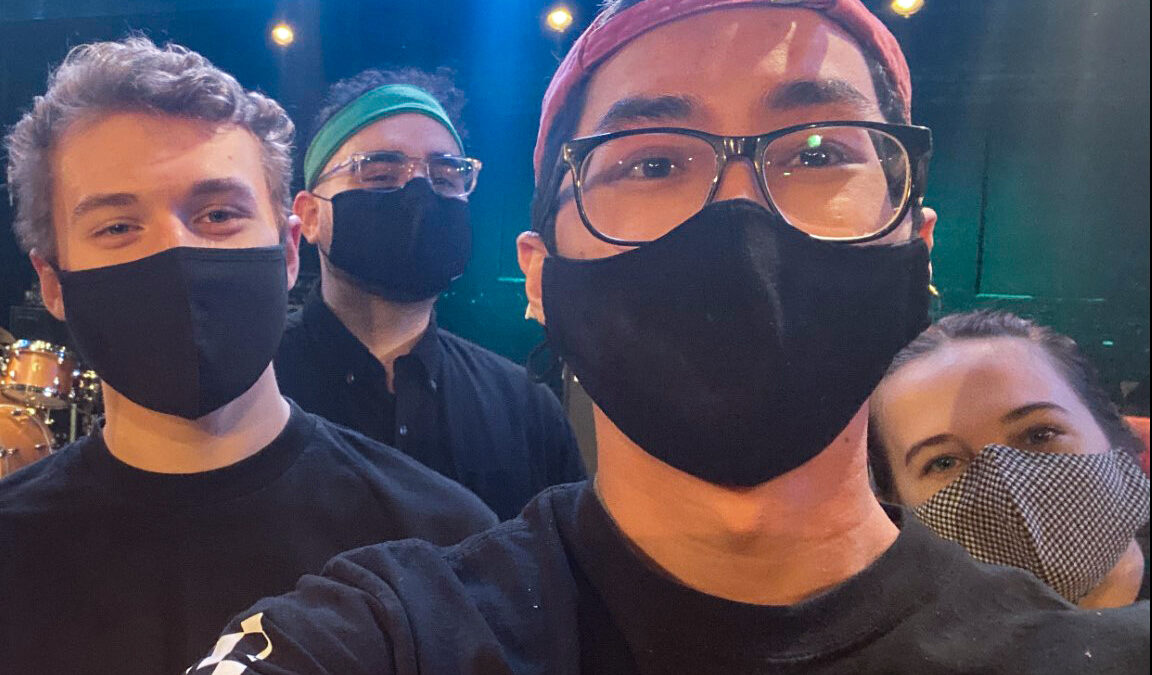
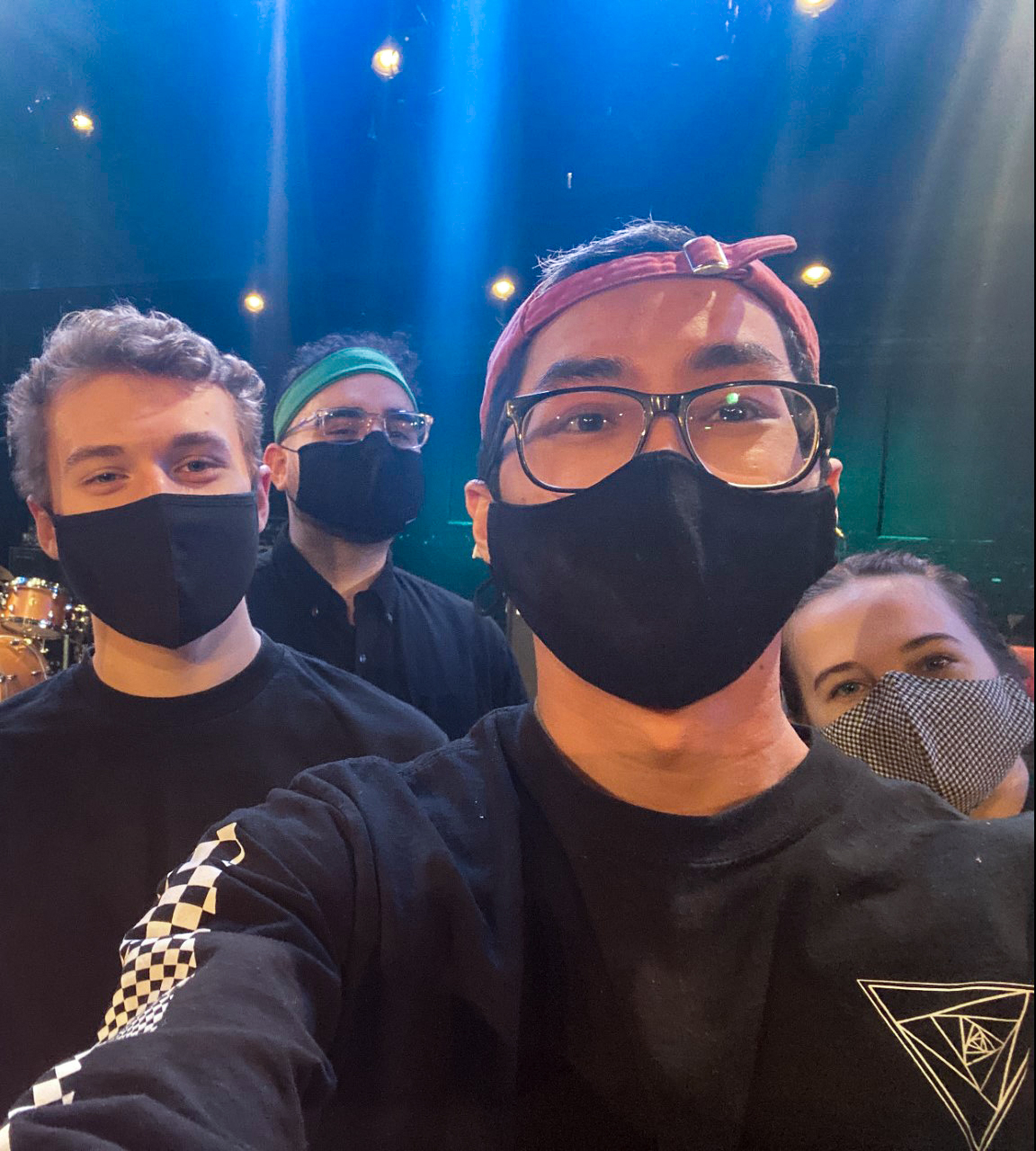
Courtesy of Nate Baxter. Left to Right: John Havrilla, Nate Baxter, Patrick Nguyen, Geo Calawerts
Spread across “Club 41” in Irion Hall under bright fluorescent lighting on a Thursday evening, mask-clad members of the EU jazz band are rehearsing for their annual springtime festival. Drew Bryant, a third-year, slips off his face mask — a nondescript black cloth decorated by the contrasting bold red of the ensemble’s logo — and begins playing the trombone in unison with his bandmates.
Recording for a future broadcast is a far cry from delivering a powerful live rendition at the university’s chapel to a throng of people. Despite the pandemic restrictions and the introduction of a virtual format for the 54th jazz festival, Bryant expressed his gratitude for the opportunity to perform alongside grammy-winning musician, Kurt Elling.
“We were playing to a brick wall and he made us feel like we were playing to thousands,” said Bryant. “I’ll never forget how I felt. I think we killed that concert.”
A week prior to the online festival, Elling had joined the jazz band at the Mill Theatre where a crew of students had set up for a 60-minute recording session. Nathan Baxter, a music business major, who will soon be auditioning for the national air force band as an audio engineer, was one of the students closely involved with the technical production of the concert.
Baxter detailed the lengthy process of selecting appropriate equipment, understanding the signal flow for the audio, and locating providers for event streaming. “It took many months,” he said.
This was the first time that the concert was made available for viewing remotely, which presented a number of obstacles for Baxter. “We had never even had a video camera at the festival before,” he remarked.
Following the success of this year’s festival, music professor Mike Pinto is working with Baxter to further “streamline the process,” as the department will now offer online streams for live concerts in the coming years.
During his two years as a band member, Bryant has assisted a team of students in stage and venue preparations. Leading up to the most recent festival, he was looking forward to working as an artist host. Once it was confirmed that the festival would be offered through virtual means, there was no longer a demand for students to receive performers at the O’Hare International Airport or work as security.
“Most of the jobs kind of became obsolete, except for the technology jobs,” said Bryant.
With 19 members in the jazz band, the students are able to safely distance themselves from one another when rehearsing on the lower level of the music hall. However, the increased space between individual ensemble players initially presented itself as a challenge for Bryant.
“I was hearing completely differently,” Bryant stated when stressing that the modified flow of sound across the room had caught him off-balance. “I couldn't hear the rest of my section, I was getting too much of some other sections.”
“Getting things to lock in was especially challenging,” he added.
Bryant noted that because of the limit on in-person gatherings, small-scale events (such as corporate or holiday parties with audiences of hundreds) were not attended by the ensemble during the fall. Performances from the university’s jazz band are customary at Oktoberfest celebrations, which were canceled last autumn, in Elmhurst and neighboring towns.
The previous year, the band’s regularly programmed appearances provided Bryant with exposure to working in numerous professional settings. “It was just a constant roll,” he shared. “[They are] the best learning experiences I’ve ever had.”
Funds raised from performances in the fall are used for the band’s international excursions. In the past, the band traveled to the Czech Republic and partook in a bohemian jazz festival.
Doug Beach, long-time director of the jazz band, described a performance by the university’s band which took place in the middle of Prague’s town square. “Those are memories that just stay with you forever,” he remembered. “The people are so warm and accepting.”
The band was then asked to play at venues as the main act in different Czech cities. Beach compared the European festival to Chicago’s Lollapalooza.
At approximately this point last year, the ensemble was notified that they would not be able to complete their yearly tours. The band was scheduled to visit Columbia, a country in South America, and teach high school students about jazz improvisation, as Beach explained.
After serving as an instructor at the university for 43 years, Beach will be retiring at the end of the current academic term. Beach is hopeful that new members of the band, who have yet to tour the globe, will soon be able to live the experience for themselves.
“The younger ones, they don't really know all the great things that go on here at Elmhurst, but hopefully, they'll get a chance,” said Beach.
Pinto, an alumnus of the university, recollected his own encounters with world-renowned artists while participating as a member of the jazz band in the early 2000s.
“Typically the musicians come and hang out and you're crammed into the president's dining room eating little snack sandwiches,” he said. “I have very fond memories of being in those situations as a student.”
Bill Holman, a famed composer who received an honorary doctorate from the university in 2014, was invited to perform with the band during Pinto’s time as an undergraduate student. Pinto recalled discussing the intricacies of musical arrangement with Holman in the midst of the after-party.
“I saw him get a Coke and kind of just sit down at a table. It's like this roaring party around him, and he's just sitting there totally alone,” Pinto fondly relayed. “I'm like, this guy's a legend. I went and asked questions about composition.”
Nearly two decades later, Pinto is delighted to provide similar opportunities for his students. “I encourage them to do the same thing. That's why we do this.”

